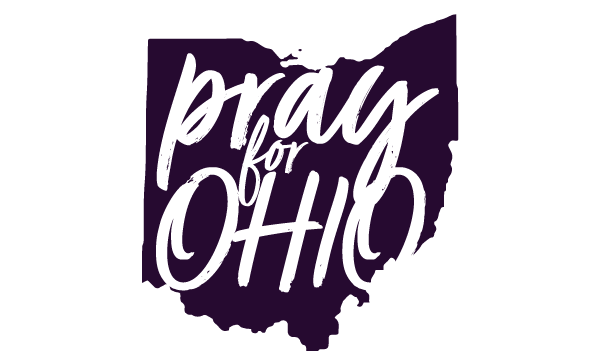

HISTORY
Unity, Prayer, and Revival
AW Tozer once preached a sermon on “Unity that Brings Revival.” He argued that in the book of Acts, the Holy Spirit did not create unity, but rather came as a result of the unity that the believers initiated at Pentecost.
A revival that took place in 1727 in Herrnhut, Germany resulted in the first missionaries coming to Ohio and is itself a beautiful example of the power of unity and prayer. This revival developed into a 100 year prayer meeting and a unique missions movement that is still bearing fruit to this day.
The events that led up to this revival began when Moravian refugees came to stay with Count Nicolaus Zinzendorf on a part of his estate, called Berthesldorf, in Germany beginning in the year 1773. Zinzendorf came from a wealthy family and was very well educated. He was raised as a Lutheran and he had loved God since he was a young boy. He felt a call at an early age to minister to those in need, and he knew about the century-long persecution of these believers. The area where the refugees began to settle became the village of Herrnhut. As Herrnhut grew, there were not only Moravians in this community, but also oppressed Christians from various other denominations. The differences in beliefs began to cause strong disunity and conflict in the community.
Zinzendorf felt he had a calling to help reconcile all the believers together. He visited various members of the community, and eventually created a covenant that called them to seek out the points that they agreed upon, rather than focusing on their differences. On May 12, 1727, an agreement was signed between all the believers, to dedicate their lives together to the service of Jesus Christ.
Just a few months after this agreement was signed, on August 13, there was a special communion service that took place at the Berthelsdorf Church. This service was like any other, as they Holy Spirit fell among the people in a unique way. Hearts were touched, and in the days after, the congregation was inspired to devote themselves to ongoing prayer around the clock. 24 men and 24 women organized themselves together to cover each hour of the day and night in prayer. This started a prayer chain that continued for over a 100 years across multiple generations!
The Moravians at Herrnhut developed a strong community not only centered on prayer, but also on various other spiritual disciplines, including fasting. They made a point to assign certain days a year for the whole community to pray and fast. They also committed themselves to fasting in response to difficult circumstances, needs, and even for those whose hearts were hardened to the Lord.
Over time, as the people devoted themselves to prayer, they felt burdened for the lost. Within the first 25 years after this prayer movement began, 100 Moravians set out to be missionaries, which was more than the rest of the Protestant church had produced in two centuries. This missions movement was quite unique for its time, and crossed lines of race, culture, age, and social class. Some Moravians sold themselves into slavery in order to do ministry. Others traveled to North America and lived among the Native Americans. Their love for God and others and the simplicity of their faith, drew many to Christ.
Ohio Moravian History
As their ministry spread in North America, one particular group of Native Americans that the Moravians settled among were the Lenape (or Delaware) Indians in Pennsylvania. David Zeisberger, a Moravian immigrant who originally resided at Herrnhut, came to Pennsylvania in 1740 and was one of the primary missionaries who ministried to this group of Native Americans. Eventually, the Lenepe were forced to move west, and headed towards Ohio. By 1772, David Zeisberger and his community of Lenape founded Ohio’s first settlement, the Village of Shoenbrunn, which was in what is now modern day Tuscarawas County. Even though the settlement was only in existence until the year 1777, it was the place where Ohio’s first civil code was established and the location of the first Ohio School house. Over time, the Moravian movement spread in Ohio, and to this day there are still many Moravian churches all over the state.
The remarkable witness of the Moravian Church is a testimony to the power of unified prayer to advance a movement of God. We can be inspired by their rich history, as well as present day practices to prioritize corporate prayer that crosses all boundaries of race, culture, age, and social class. As we long to see God bring true transformation to our communities, we can be encouraged that the more unified we are as a body, the more the Lord can work through us!
References:
Bost, A. History of the Bohemian and Moravian Brethren (Abridged and Translated) London: Religious Tract Society, 1834. Print.
Burns, Jason. "The Life of Count Zinzendorf." YouTube. Samuel Zwemer Theological Seminary, 20 July 2011. Web. 20 Nov. 2015. <https://www.youtube.com/watch?v=6wtPVRDq6do>.
"David Zeisberg Historical Marker." Explore PA History. N.p., n.d. Web. 20 Nov. 2015. <http://explorepahistory.com/hmarker.php?markerId=1-A-48>.
Greenfield, John. Power on High. N.p.: n.p., 1927. N. pag. Moravian Revival. Web. 20 Nov. 2015. <http://www.evanwiggs.com/revival/history/moravian.html>.
"Our History." Redeemer Moravian Church. Redeemer Moravian Church, 2013. Web. 20 Nov. 2015. <http://redeemermoravian.org/about/our-history/>.
"Schoebrunn Village: The First Christian Settlement in Ohio." Ohio History Connection. Ohio History Connection, n.d. Web. 20 Nov. 2015. <https://www.ohiohistory.org/visit/museum-and-site-locator/schoenbrunn-village>.
Tarr, Leslie K. "A Prayer Meeting That Lasted 100 Years." Editorial. Decision May 1977: n. pag. A Prayer Meeting That Lasted 100 Years. Web. 20 Nov. 2015. <http://www.christianitytoday.com/ch/1982/issue1/118.html>.
Unity That Brings Revival. Perf. A.W. Tozer. N.d. YouTube. Web. 20 Nov. 2015. <https://www.youtube.com/watch?v=BpdN9rZNZ_A>.